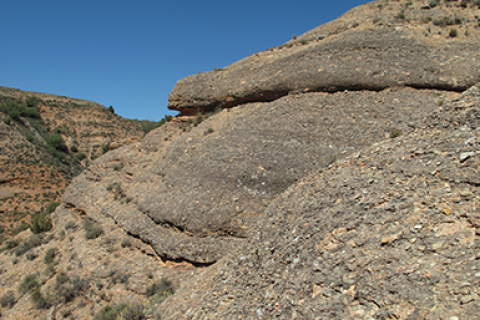Earth materials
From atoms to an entire planet

The microscale properties of the materials that the Earth is made of exert a profound influence on virtually all large-scale phenomena occurring in the solid Earth system. This includes processes ranging from mantle convection and tectonic plate dynamics to subduction and orogeny and from basin evolution and resources formation to volcanism and seismicity.
Controlling a rock?
Research into the behaviour of Earth materials involves experimental, theoretical and numerical modelling work. It aims at quantifying the thermodynamic, mechanical, chemical, transport, and magnetic properties of rocks, faults, minerals and melts – in terms of the controlling micro- and atomic-scale phenomena.
Adressing societal issues
Results provide crucial input for modelling large-scale surface, crustal and mantle processes and for addressing a wide range of societal problems. For example: what controls earthquakes and volcanic eruptions and can we decrease their impact? How can we store CO2 or radio-active waste safely in the subsurface? How stable are salt domes that we may want to use for storage of hydrogen fuel or pneumatic energy in future? How will the subsurface behave in the northern Netherlands in the long term when gas production is further reduced or even stopped? Such questions take centre stage in our Earth materials research.

